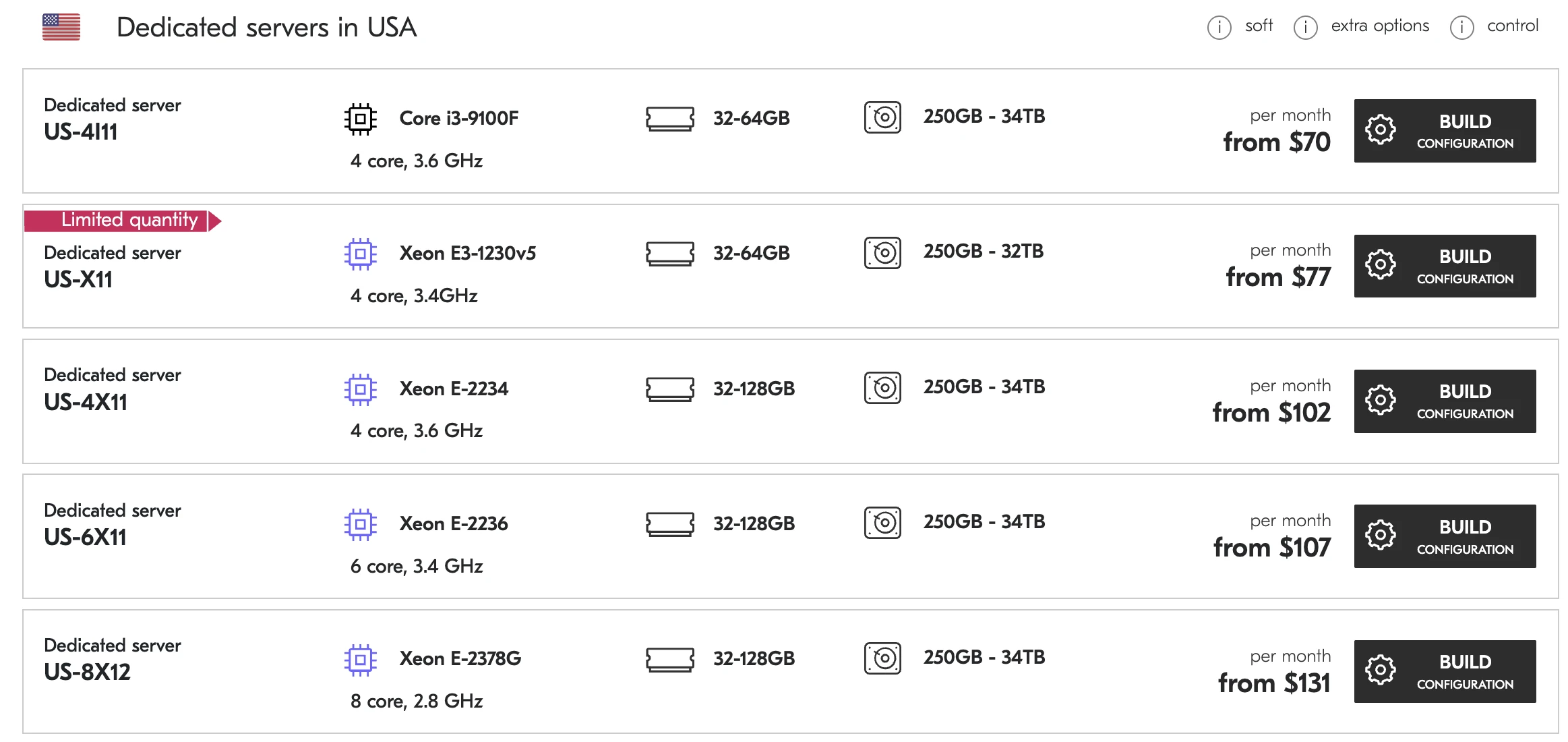When you’re choosing VPS hosting, it’s easy to drown in marketing. Providers promise “lightning-fast speed,” “unmatched stability,” and “revolutionary technologies.” In reality, you often end up on an overloaded server where your site slows down together with a hundred noisy neighbors.

We don’t sell pretty words. We tested dozens of providers, measured real-world performance, checked pricing transparency, and contacted support at 3 a.m. to see how they respond. This ranking includes only those who passed a real stress test in practice.
What Matters in VPS Hosting in 2025
The days when you could impress a customer with “unlimited traffic” and “99% uptime” are over. Today’s users understand technology and want specifics:
- KVM virtualization is no longer a competitive edge, it’s a basic requirement. Container-based virtualization (OpenVZ) is a compromise nobody wants in 2025.
- NVMe instead of SSD — the difference in disk speed is visible in every database query. If a provider in 2025 is still offering SATA SSD, they clearly have issues with infrastructure upgrades.
- Real performance — the specs on the pricing page mean nothing if the CPU is overloaded and disks are shared between a hundred virtual machines.
- Honest pricing — hidden fees, extra charges for IPv4, paid control panels, traffic caps — all of this are signs that the provider profits from lack of transparency.
We evaluated providers based on these criteria — and here’s what we found.
#1: THE.Hosting — Plans From €1, Not Just Marketing Slogans
THE.Hosting stands out not only with its pricing, but with an honest approach to hosting. This is a provider that doesn’t play marketing games and doesn’t push unnecessary services.
Why THE.Hosting Is in First Place
Plans start at €1/month — the Ferrum plan gives you a full VPS for up to 6 months. This is not a trial, not a demo, but a real server with:
- 1 vCore CPU
- 1 GB ECC RAM (not regular memory, but error-correcting)
- 15 GB NVMe disk in RAID 10
- 10 Gbps port (overall datacenter uplink)
- Unlimited traffic
- Root access and any Linux OS
- Available in all 50+ locations
Ferrum can be ordered once per account for a period of up to 6 months, extension is not possible — it’s an entry-level plan to get acquainted with the infrastructure. For the price of a cappuccino, you can test a real VPS anywhere in the world.
- 50+ locations worldwide — from Amsterdam to Singapore, from New York to Tokyo. Unified pricing across all countries. You don’t have to think where it’s cheaper — it’s the same everywhere.
- Regular plans start from €5.77/month (Aluminium) and scale up to powerful configurations with 32 vCores and 64 GB RAM. All plans use NVMe storage, all are KVM-based, all with unlimited traffic.
- Long-term discounts — the longer you pay, the more you save:
- 3 months: -5%
- 6 months: -10%
- 12 months: -15%
This is not trivial — on an annual plan you effectively save around a month and a half of hosting.
What You Get With THE.Hosting
- KVM virtualization on all plans without exception. Your VPS runs with its own OS kernel and doesn’t depend on neighbors’ load.
- NVMe disks in RAID 10 — fast and reliable. Even if one disk fails, your data is safe.
- ECC RAM — error-correcting memory usually reserved for real server hardware. Reduces the risk of crashes due to corrupted data in RAM.
- 10 Gbps port — datacenter uplink capacity. Your actual server speed depends on the plan, but the infrastructure is ready for high loads.
- Unlimited traffic — no caps on inbound or outbound traffic. No need to count gigabytes or fear surprise overage bills.
Who THE.Hosting Is For
- Beginners — the Ferrum plan lets you try a VPS for a symbolic price and understand whether you actually need a server.
- Developers — stable infrastructure, clear documentation, and the ability to choose a location close to your audience.
- High-traffic projects — unlimited bandwidth and high throughput mean you don’t have to worry about traffic limits.
- Businesses — ECC RAM, RAID 10, KVM virtualization — exactly the kind of reliability corporate clients expect.
THE.Hosting is what you choose when you want a provider that doesn’t promise to be “the best in the world,” but simply gives you working servers at an honest price.
#2: DigitalOcean — Stability From $6/Month
DigitalOcean is one of the oldest players in the cloud VPS market. Founded in 2012, it still maintains a high quality bar — though not without compromises.
What DigitalOcean Offers
The starter Standard Droplet plan from $6/month (it used to be $5, but prices increased in 2025):
- 1 vCPU
- 512 MB RAM (less than THE.Hosting)
- 20 GB SSD (not NVMe)
- 1 TB traffic (not unlimited)
Managed services — DigitalOcean offers managed databases, Kubernetes clusters, load balancers. Convenient if you don’t want to manage infrastructure yourself — but every managed service costs extra.
Great documentation — one of the best collections of tutorials in the industry. If you need to quickly learn how to configure something on a server, DigitalOcean is a reliable resource.
Active community — forums, discussions, and ready-made solutions from other users. In many cases, your question has already been asked and answered.
Drawbacks of DigitalOcean
- Price increase — from $5 to $6, while competitors stayed cheaper.
- SATA SSD instead of NVMe — slower disks than THE.Hosting and other modern providers.
- Traffic limits — 1 TB on the base plan. If your project grows, you’ll have to move to a more expensive plan or pay for overages.
- No ECC RAM on base plans — non-ECC memory increases the risk of random failures.
DigitalOcean is a solid choice for those who value brand stability and are willing to pay for managed services.
#3: Vultr — Fast, But With Caveats
Vultr entered the market in 2014 and quickly built a reputation thanks to aggressive pricing and good performance.
What Vultr Offers
Base Regular Performance plan from $5/month:
- 1 shared vCPU
- 1 GB RAM (non-ECC)
- 25 GB SSD (not NVMe on the base plan)
- 1 TB traffic (limited)
- ~30 locations
High Performance NVMe line from $6/month with better specs:
- 1 dedicated vCPU
- 1 GB RAM
- 25 GB NVMe
- 1 TB traffic
Specialized instances — Vultr offers bare-metal servers and GPU instances, which sets them apart from some competitors.
Drawbacks of Vultr
- Limited traffic — even on higher plans bandwidth is capped. Overages cost extra.
- Inconsistent performance in some regions — users report network issues in specific datacenters.
- Aggressive fraud protection — new customers often encounter account blocks and additional verification requests.
- Support — response quality is unpredictable; replies may come within an hour or in a day.
Vultr is suitable for technically savvy users who need specialized instances and are ready to tolerate the quirks of the platform.

#4: Linode (Akamai) — Market Veteran With a Conservative Approach
Linode is one of the oldest VPS providers (founded in 2003). In 2022 it was acquired by Akamai, a major CDN provider.
What Linode Offers
Starter Shared CPU plan from $5/month:
- 1 shared vCPU
- 1 GB RAM
- 25 GB SSD (no NVMe on base plans)
- 1 TB traffic
- ~12 locations
More generous traffic — Linode’s traffic limits are higher than many competitors. For example, the $20/month plan includes 4 TB.
Reputation and uptime — the provider is known for reliable performance and high uptime. Many clients have been using them for years.
Dedicated CPU plans — for demanding projects, Linode offers dedicated vCPUs with guaranteed performance, but at higher prices.
Drawbacks of Linode
- Post-acquisition issues — after the Akamai acquisition, new customers have complained about aggressive fraud detection. Accounts get blocked even after successful payment.
- Fewer locations — only 12 datacenters versus 50+ at THE.Hosting.
- No NVMe on base plans — you need to move to more expensive tiers to get NVMe storage.
- Pricing — for the same specs, THE.Hosting is cheaper and offers more locations.
Linode is a good option for existing long-term customers comfortable with the ecosystem. New users may want to consider other alternatives.
#5: Hetzner — European Giant With Excellent Price–Performance
Hetzner is a German company founded in 1997, known for aggressive pricing and strong hardware, especially in Europe.
What Hetzner Offers
Cost-Optimized plans from €3.49/month (new 2025 lineup):
- 2 shared vCPUs (ARM or x86)
- 4 GB RAM
- 40 GB SSD
- 20 TB traffic (Europe only!)
Datacenters: Germany, Finland, Netherlands, USA, Singapore.
Regular Performance on AMD EPYC Genoa — as of October 2025, hardware has been refreshed, boosting performance by about 30%:
- From €4.49/month for 2 vCPUs, 4 GB RAM, 40 GB NVMe
- Up to around €6 you can get 2 vCPUs and 4 GB RAM — something that would cost $15–20 with US-based providers
Drawbacks of Hetzner
- Generous traffic only in Europe — 20 TB in EU datacenters, but only 1 TB in the US and 500 GB in Singapore. If your audience is in Asia or the Americas, you’ll have to watch bandwidth.
- Fewer locations — just 5 regions versus 50+ at THE.Hosting. If you need specific geographies (Latin America, Africa, Middle East), Hetzner won’t be enough.
- No truly global coverage — servers are concentrated in Europe, the US, and a single Asian location (Singapore).
- European jurisdiction — a plus for GDPR compliance, but may be a downside for projects that need other legal frameworks.
Hetzner is an excellent choice for European projects with high traffic. But for global deployments with coverage across dozens of countries, THE.Hosting is more convenient.
Comparative Provider Table
| Parameter | THE.Hosting | DigitalOcean | Vultr | Linode | Hetzner |
|---|---|---|---|---|---|
| Starting price | €1/month | $6/month | $5/month | $5/month | €3.49/month |
| Base recurring plan | €5.77/month | $6/month | $5/month | $5/month | €4.49/month |
| vCPU type | Dedicated | Shared | Shared | Shared | Shared |
| RAM type | ECC | Regular | Regular | Regular | Regular |
| Storage on base plan | NVMe RAID 10 | SSD | SSD | SSD | SSD/NVMe |
| Traffic | Unlimited | 1 TB | 1 TB | 1 TB | 20 TB (EU) / 1 TB (US) |
| Locations | 50+ countries | ~10 | ~30 | ~12 | 5 regions |
| Unified pricing | Yes | Yes | Yes | Yes | Yes |
Final Recommendations
Choose THE.Hosting if:
- You need global coverage with 50+ locations
- Unlimited traffic with no hidden surcharges is important
- You want to try a VPS for €1 for up to 6 months
- You need uncompromising performance (dedicated vCPU, ECC RAM, NVMe)
- Your project requires predictable, transparent pricing
Choose DigitalOcean if:
- You need managed services (managed databases, Kubernetes, etc.)
- You work within a large cloud ecosystem
- You’re ready to pay extra for brand and reputation
- You need integration with the provider’s other services
Choose Vultr if:
- You need GPU instances or bare-metal servers
- You’re technically experienced and can deal with a finicky platform
- Your project doesn’t require huge traffic volumes
Choose Linode if:
- You’re already using their services and are satisfied
- You need integration with Akamai CDN
- Your project fits comfortably within traffic limits
Choose Hetzner if:
- Your project is focused on Europe
- You need massive bandwidth (20 TB) in European datacenters
- Your budget is very tight and European locations are sufficient
Why THE.Hosting Comes Out on Top
The key difference with THE.Hosting is that there are no compromises made just to offer a low price. The €1 plan is not a crippled teaser, but a full-fledged VPS with the same technologies as on higher-tier plans. Unlimited traffic is truly unlimited, without hidden throttling. And 50+ locations let you deploy a server almost anywhere in the world without regional price markups.
Competitors force you to choose: either a low price with strict limits, or decent performance for significantly more money. THE.Hosting gives you both at once.
Try a VPS for €1 right now: https://the.hosting/
















